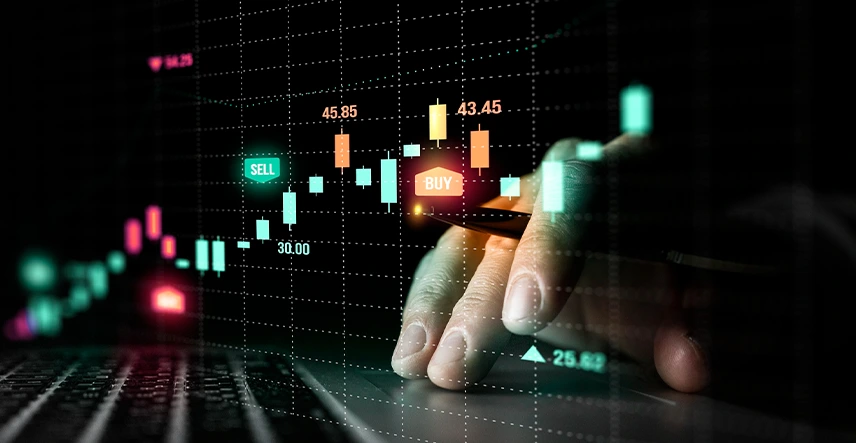
Relationship between forex and stock markets can be complex. Stock prices are affected not only by currency movements but also other factors like earnings reports and political events.
Sui and Sun (2016) establish that exchange rate shocks have an extensive transmission effect to stock prices, leading to significant fluctuations in both exchange rate volatility and stock market volatility. They further demonstrate bidirectional causality between stock market and exchange rate volatility.
The FTSE 100
The FTSE 100 index represents the 100 largest companies trading on the London Stock Exchange and has been around since 1984, becoming one of the world’s most famous stock market indices. Many traders watch closely because its performance can serve as an early warning of economic and international events; when other overseas markets fall, while global conditions improve, its price falls.
For inclusion on the FTSE 100 index, a company must meet specific criteria. They must hold a significant market share, be listed on London Stock Exchange, and possess an adequate free-float adjusted market capitalization.
Traders can open positions in the FTSE 100 using different strategies, including cash and futures CFDs – popular among short-term traders because of their lower spreads – cash ETFs or ETNs that track its performance are also an option for traders to open positions.
The S&P 500
The S&P 500 index of large-cap domestic equities comprises some of the world’s premier companies and their most prominent stocks, selected by a committee. Notable constituents include Alphabet (parent company of Google), Facebook and Apple – popular names on any stock market! Being market cap weighted index means its performance closely parallels the overall market.
There is evidence of the S&P 500 having an outsized influence on other markets during times of financial crises – known as financial contagion effect. A variety of studies have examined this relationship, such as looking at return and volatility spillovers between S&P and other markets.
These studies have typically examined crisis periods rather than long-term trends; however, some have investigated the effect of changes to constituents within the S&P, with authors of one research study concluding that discretionary changes can have an immediate and substantial effect on its performance.
The Nasdaq
The Nasdaq (National Association of Securities Dealers Automated Quotation) is an American stock exchange where trading takes place exclusively online rather than on physical trading floors. It became famous during the dot-com bubble for attracting many technology (and later biotechnology) firms to list on it; such companies continue to list with Nasdaq today.
Studies on volatility spillover effects have long relied on conditional mean or volatility correlation coefficients as measurements; however, these methods fail to capture the intricacies of information transmission during extreme market conditions. To address this, this research employed QVAR models to create relative and directional spillover networks using QVAR models that reveal significant shifts in level and structure of spillovers between global major stock markets under various market states; furthermore, emerging economy stock markets showed more significant increases than developed ones during extreme conditions.
The Russian Stock Market
This paper investigates connectivity and volatility spillover effects between major global stock markets under normal and extreme conditions. Our results indicate that under normal circumstances, international stocks exhibit strong regional interconnections – with Europe and the U.S. at their centers – while in times of severe downturn information-related risk contagion takes priority; mature stock markets play an essential role in controlling risk spread.
Russia-Ukraine conflict. On May 18th, MOEX index hit 3,500 mark, signalling economic recovery in Russia after economic sanctions.
Retail investors from Russia’s domestic retail investor community have been key in driving its revival, investing their savings instead of leaving it in bank deposits with low returns. Prior to Ukraine invasion and subsequent sanctions, Russia was once a popular investment choice; these opportunities now seem limited.





